The Mars Express mission support group has published a new series of spectacular images. They demonstrate two faults in the Martian crust, which are part of the majestic canyon system of the Valles Marineris.
The largest canyon in the Solar System
Mars is home to one of the largest canyon systems in the Solar System, known as the Valles Marineris. Its length is 4,500 km (a quarter of the circumference of the planet), width — 200 km, depth — up to 11 km. Compared to it, the famous Grand Canyon of the Colorado River (its length is 450 km, maximum width is 29 km, depth is 1.7 km) looks like a real dwarf.
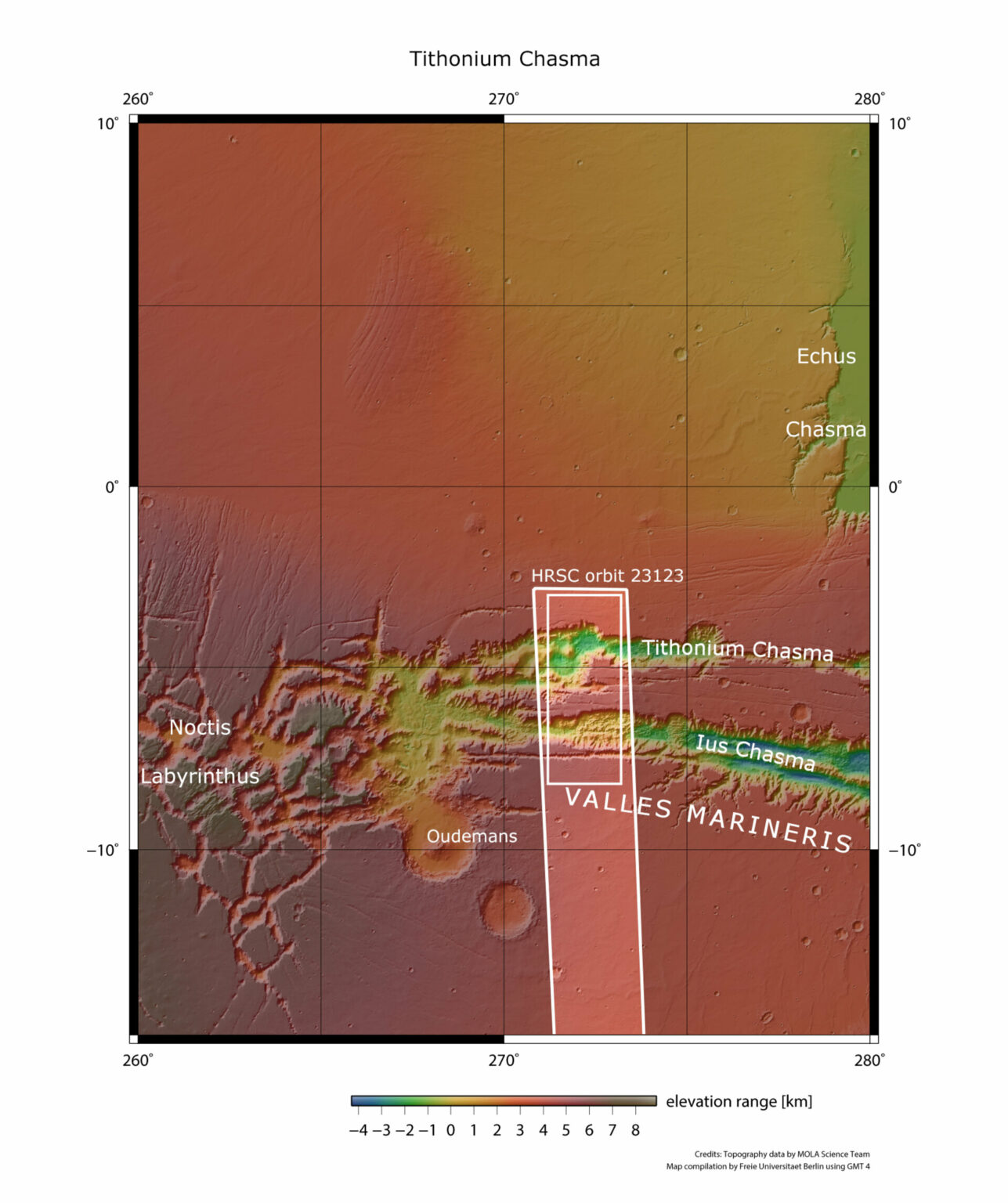
In addition to the size, there is another significant difference between the two formations. The Grand Canyon was “carved” by the Colorado River, while the Valles Marineris were formed as a result of tectonic processes that caused the cracking of the Martian crust.
Tithonium Chasma
The Mars Express images show two faults in the western part of the Valles Marineris. These are the 840-kilometer Ius Chasma and the 805-kilometer Tithonium Chasma. It is worth noting that although the images taken from orbit show many amazing details of these structures, they still do not convey their entire scale. The depth of these canyons reaches 7 km, they could fit the highest peaks of all parts of the earth’s land except Asia.
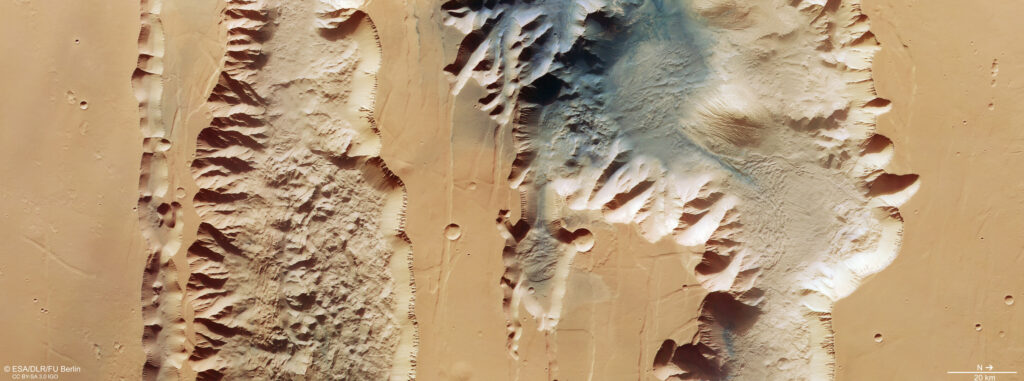
Part of the Tithonium Chasma is covered with dark sand dunes. Their color may be associated with ash from the nearby volcanic region of Tharsis. Next to the dark sand dunes there are two light mounds, somewhat resembling mounds. They rise to a height of more than 3 km above the base of the canyon. The surfaces of these mounds have been actively eroded by Martian winds, indicating that they are made of weaker material than the surrounding rock.
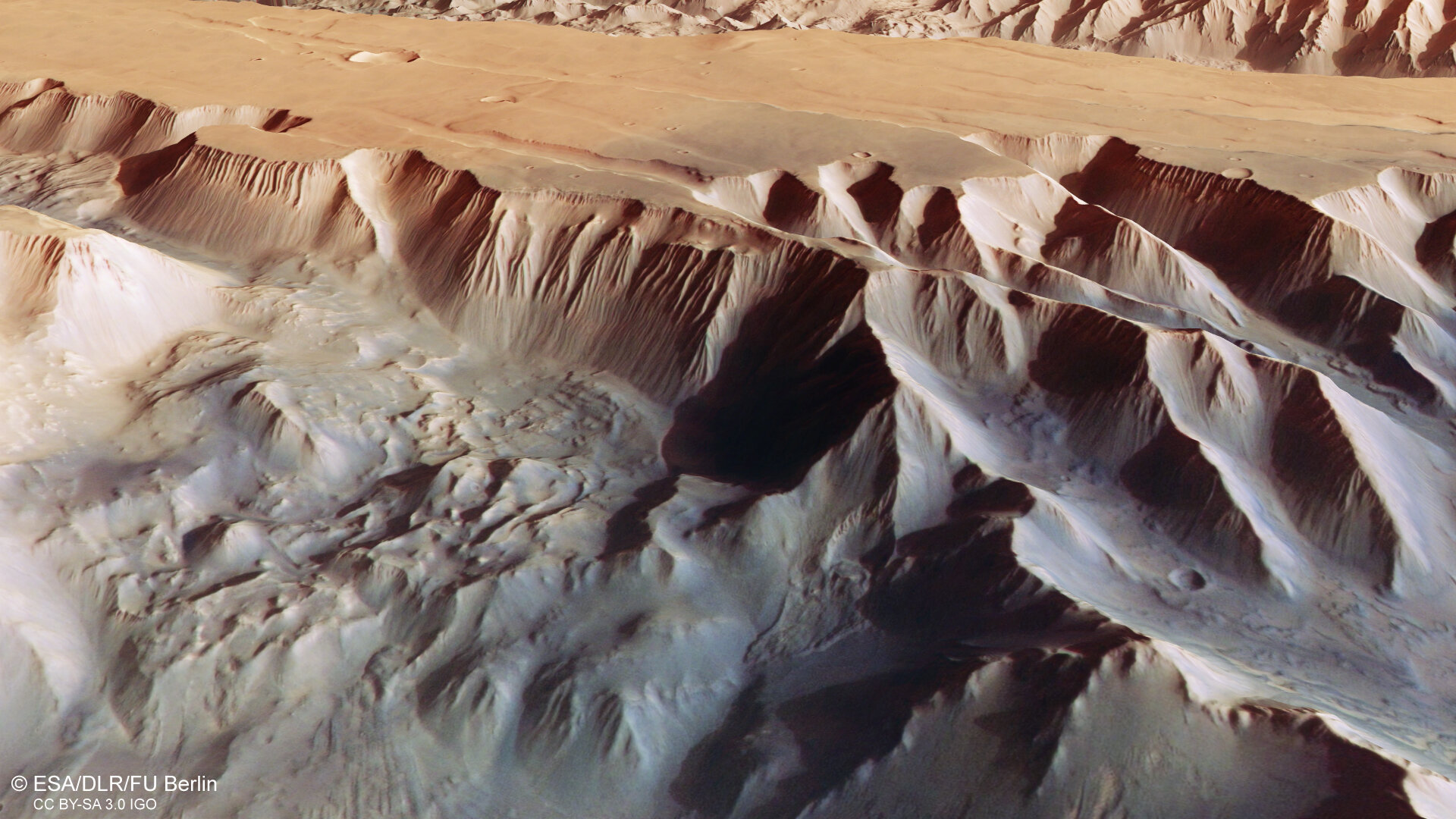
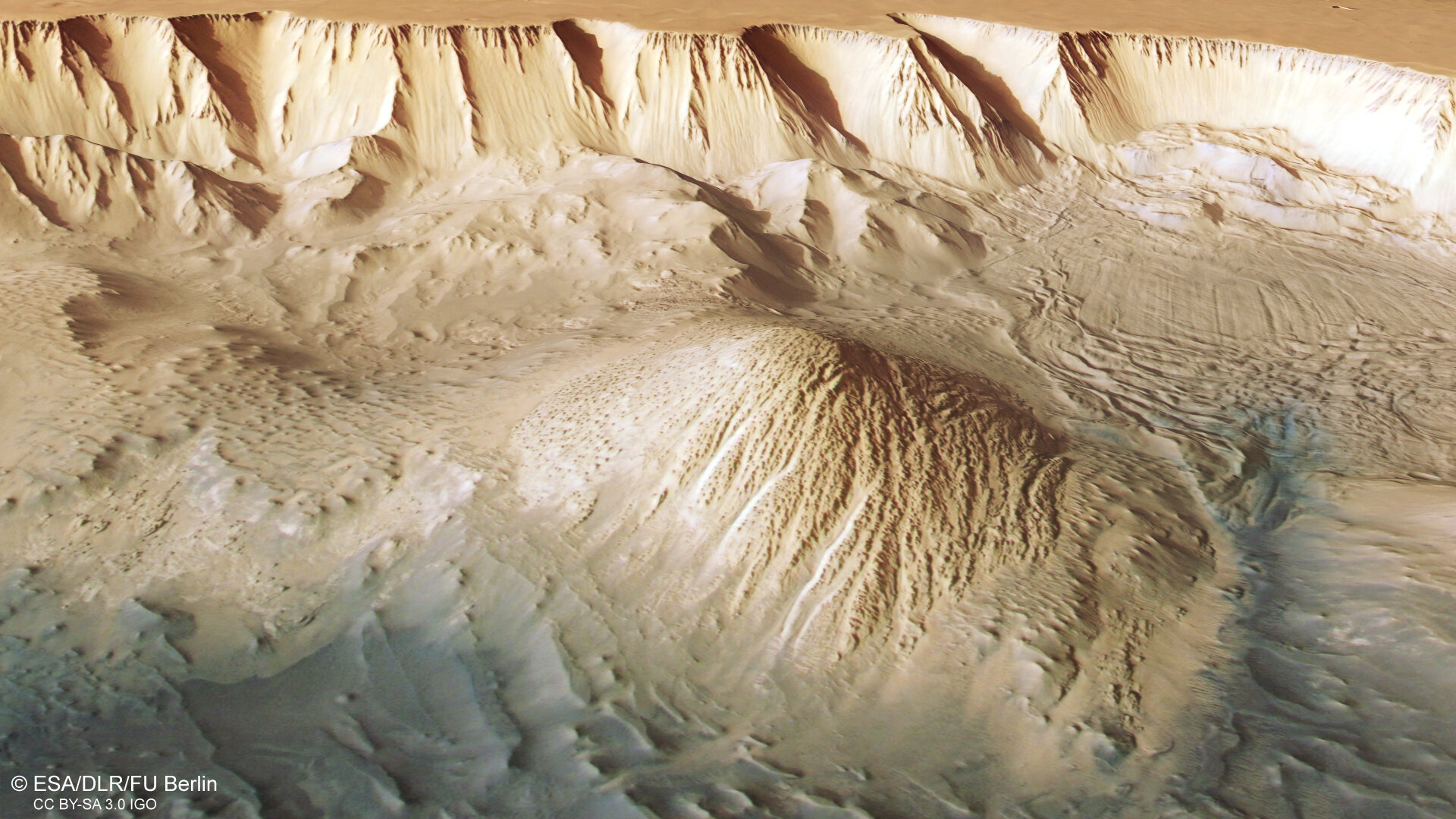
A number of small bulges can be seen between the two mounds. Mars Express has discovered water-bearing sulfate minerals in this region. This suggests that the bulges could have formed when the liquid that once filled the canyon evaporated. The Mars Express photo also shows traces of a relatively recent landslide that occurred due to the collapse of one of the walls of the Tithonium Chasma.
Ius Chasma
The image of Ius Chasma is no less fascinating. As the tectonic plates diverged, they led to the formation of jagged triangular rock formations that resemble a row of shark teeth. Over time, some of these rock formations collapsed and underwent erosion.
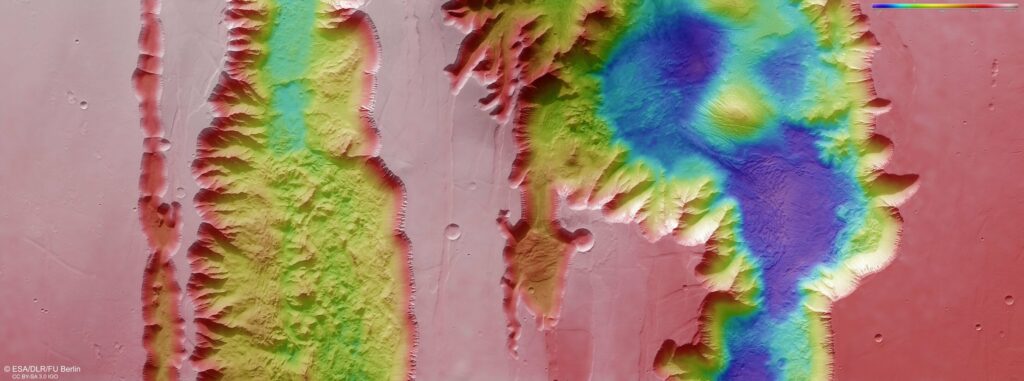
You can also read our article about what you can hear on other planets in the solar system, including Mars.
According to https://www.esa.int
Follow us on Twitter to get the most interesting space news in time
https://twitter.com/ust_magazine

